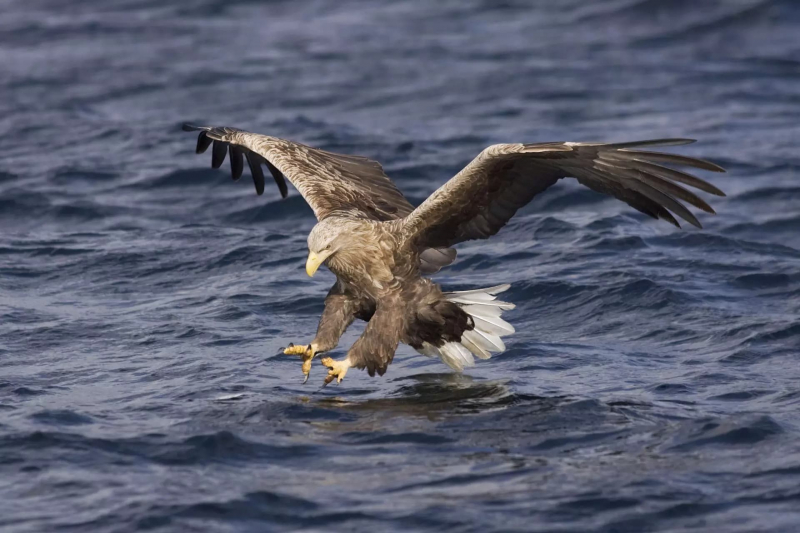White-Tailed Sea Eagle
The White-Tailed Eagle (Haliaeetus albicilla) is a very large species of sea eagle widely distributed across temperate Eurasia. They often spend most of the year close to large bodies of open water, such as rivers, lakes, wetlands, bogs, and coastal saltwater areas. For nesting, it needs old-growth trees or big sea cliffs, and it needs a lot of fish, birds (mostly water birds), and any other kind of available prey.
The general hue of an adult white-tailed eagle is greyish-mid brown. The majority of the body and wings have fairly uniform plumage, but the top wing coverts are frequently a little lighter. The mature bird's head, neck, and upper breast are noticeably paler than the rest of its plumage and are often buff in hue. These light regions can occasionally become considerably paler, up to virtually white, in aged or bleached plumage, giving these eagles the appearance of a washed-out bald eagle.
The White-Tailed Eagle holds a significant place in various cultures and folklore. In several European countries, this majestic bird symbolizes strength, power, and even royalty. It has been depicted on national emblems, coins, and historical coats of arms, representing the pride and heritage of the regions it inhabits. The White-Tailed Eagle's prominent presence in art, literature, and mythology further emphasizes its cultural importance and its enduring influence on human imagination throughout history.
Recent White-Tailed Eagle restoration and conservation efforts have been a success story. The species declined due to hunting and habitat destruction, disappearing from many of its original range. Some populations have recovered because to conservation efforts and legislative protections. In Europe, White-Tailed Eagle numbers have recovered after successful reintroduction initiatives. These conservation victories demonstrate the necessity of working together to save endangered species for future generations.











